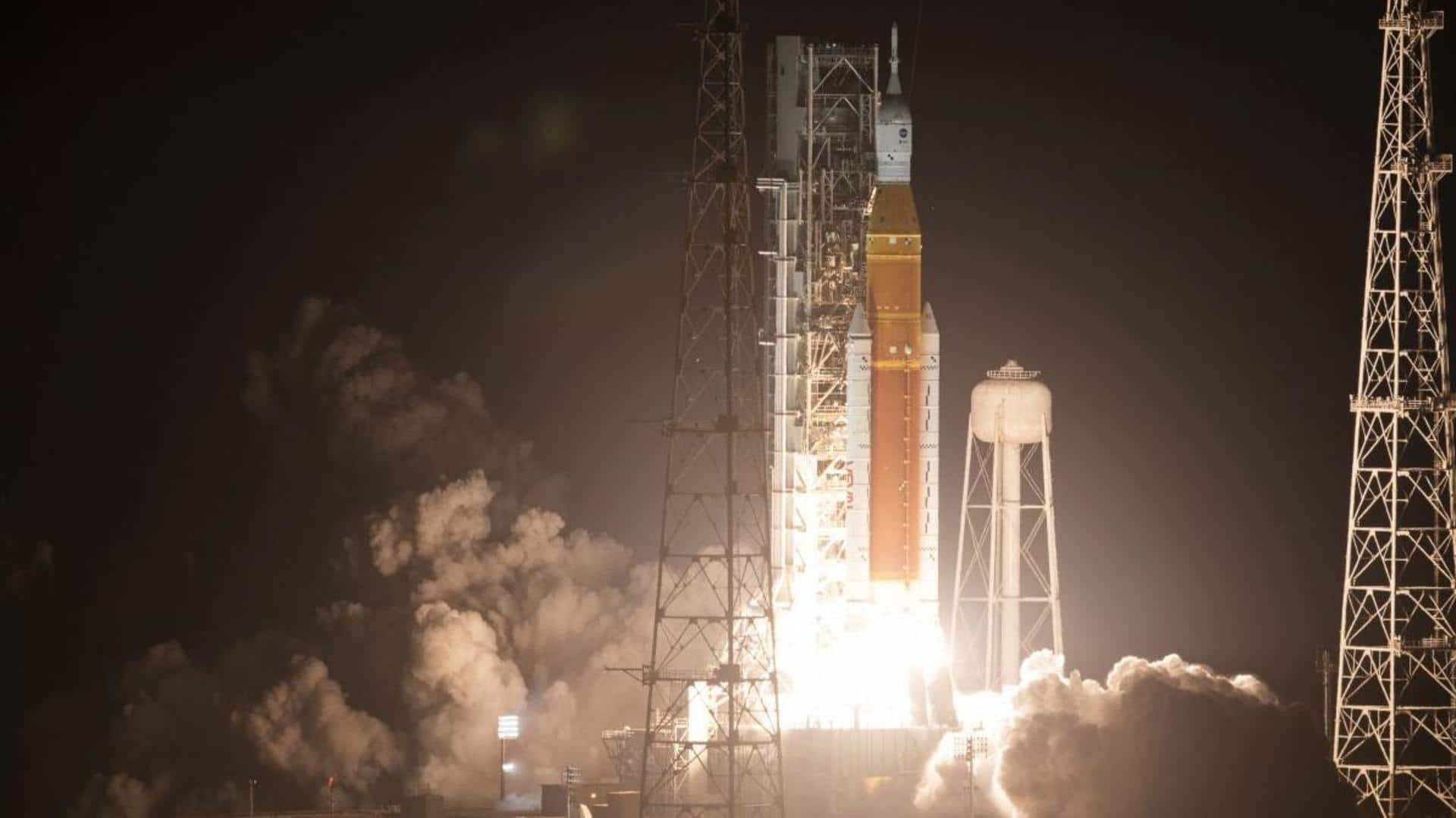
NASA Artemis 1 Moon mission launches successfully: Key facts
What's the story
After months of wait, NASA's Artemis 1 mission successfully took off from Launch Pad 39B at Kennedy Space Center in Florida, US.
The project, comprising the Space Launch System (SLS) rocket and Orion spacecraft was supposed to be launched on November 14. However, it was canceled due to Hurricane Nicole.
This uncrewed mission is the first in a series of endeavors to the Moon.
Twitter Post
Watch the take-off moment!
We are going.
— NASA (@NASA) November 16, 2022
For the first time, the @NASA_SLS rocket and @NASA_Orion fly together. #Artemis I begins a new chapter in human lunar exploration. pic.twitter.com/vmC64Qgft9
Context
Why does this story matter?
After years of hard work and spending billions of dollars, the Artemis 1 mission has finally seen the light of day.
The Artemis will put an end to humanity's 50-year wait to land on the Moon. The last project to do so was Apollo 17.
The future of our spacefaring ambitions hinges on this mission's success. We might also head to Mars one day.
Details
What is Artemis 1 and what does it carry?
Artemis 1 is an uncrewed four to six-week flight test of the SLS and the Orion around the Moon. It will verify whether the two will be suitable for crewed journeys there.
It carries a toy called Shaun the Sheep, and two dummies, Helga and Zohar which pack 5,600 radiation sensors.
Ten payloads, including Lunar IceCube and Lunar Polar Hydrogen Mapper, are also onboard.
Pioneer
It is a mission of many firsts
Artemis 1 is a mission of many firsts.
It is carrying a voice assistant called Callisto, which is a modified version of Amazon's Alexa.
It will also host a long-duration biology experiment in space to find the risks posed by cosmic radiation to astronauts.
The BioSentinel satellite is carrying yeast cells and will monitor their behavior when they are exposed to severe radiation.
Spacecrafts
A look at the SLS and Orion
The SLS has four RS-25 engines, five segment boosters, and weighs six million pounds.
Meanwhile, Orion is connected to an Interim Cryogenic Propulsion Stage that will give it the push to head to the Moon. The two will separate around two hours after launch.
Orion will fly about 100km above the lunar surface for six days and will then return to Earth.
Reasons
Why is the Artemis mission important?
NASA claims that the Artemis mission will land the first woman and the first person of color on the Moon.
The project will ensure humanity's long-term presence there and might serve as a launch pad to send astronauts to other planets, like Mars.
It will also be the first to probe into the lunar south pole, which has never been visited before.
Plans
What will happen if Artemis 1 is successful?
The Artemis 1 project will not be the end of NASA's lunar aspirations. It will be followed by the Artemis 2 and Artemis 3 missions.
If everything goes according to the plan, in 2024, there will be a crewed Artemis 2 flight around the Moon.
Finally, in 2025, the Artemis 3 will land the astronauts on the Moon's surface.